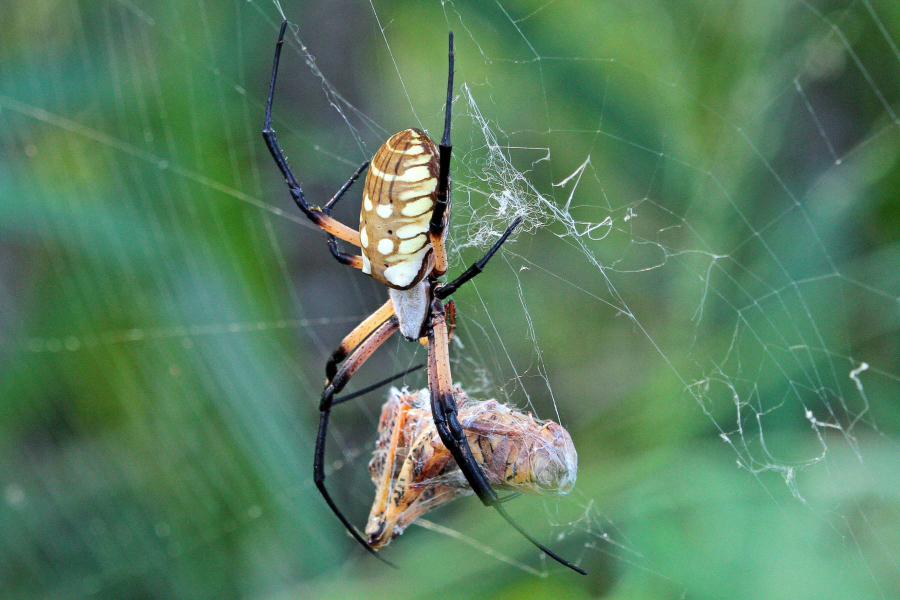These spooky spiders are master engineers
The yellow garden spider might look scary, but it is a great form of natural pest control.

If you picture a spider web, the shape you’re thinking of was probably created by an orb weaver. This diverse group of spiders is responsible for the web shape that inspires everything from Halloween decorations to the images from Charlotte’s Web. With over 2,800 species, and 180 of them in North America, there is a reason their web shape can be recognized almost anywhere. Here in the Chesapeake Bay, one of the most common and recognizable orb weavers is the yellow garden spider.
As its name implies, the yellow garden spider has bright yellow patches and is commonly seen in gardens. If you have them in your garden that could be a good sign for your plants. Yellow garden spiders are excellent predators that can help maintain the balance in a garden ecosystem. They prey on small insects like gnats and aphids, but will also feast on large insects like grasshoppers that can be up to twice their size.
How yellow garden spiders catch their prey has a lot to do with their master web making. Female spiders will often build a new two-foot-wide web each day.
They begin by finding a potential location and waving their front legs to survey the area. When a suitable location is determined, the female will drop the first string of silk and wait for a breeze to connect the silk to a nearby structure. The female will proceed to build the rest of the web by connecting to that first strand of silk. She will add the signature zigzag pattern across the center of the web that yellow garden spiders are known for. This pattern is known as the stabilimentum. The exact purpose of this pattern is not known, but researchers think it might be a way to help birds see the web and avoid flying through it.
Females will often sit in the middle of the web and wait for prey to land. As soon as prey is trapped in the web, the spider will bite it to kill it and wrap it in silk. When they are ready to eat their prey, they will vomit digestive juice onto the prey so it starts to decompose before the spider eats it.
Skip the Halloween decorations and make a home for yellow garden spiders in your yard and have decorations and pest control appear naturally. To create a home for these interesting spiders, add a variety of native plants to your yard including shrubs, avoid pesticides and go easy on the garden cleaning in the fall to provide ample habitat for insects to overwinter.

Comments
There are no comments.
Thank you!
Your comment has been received. Before it can be published, the comment will be reviewed by our team to ensure it adheres with our rules of engagement.
Back to recent stories